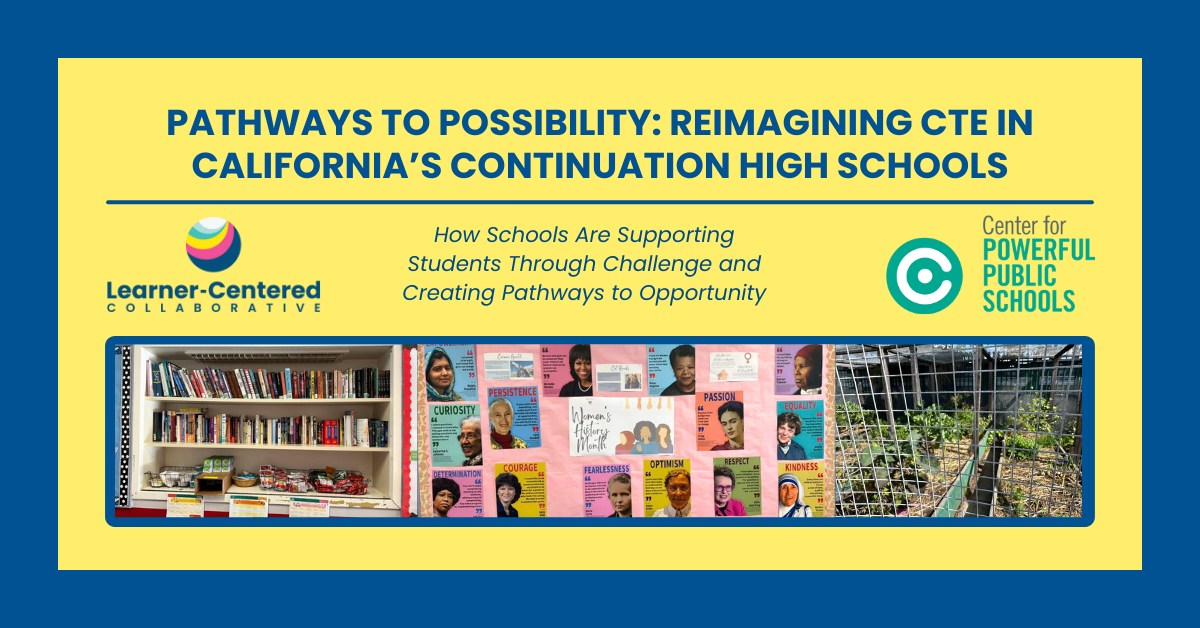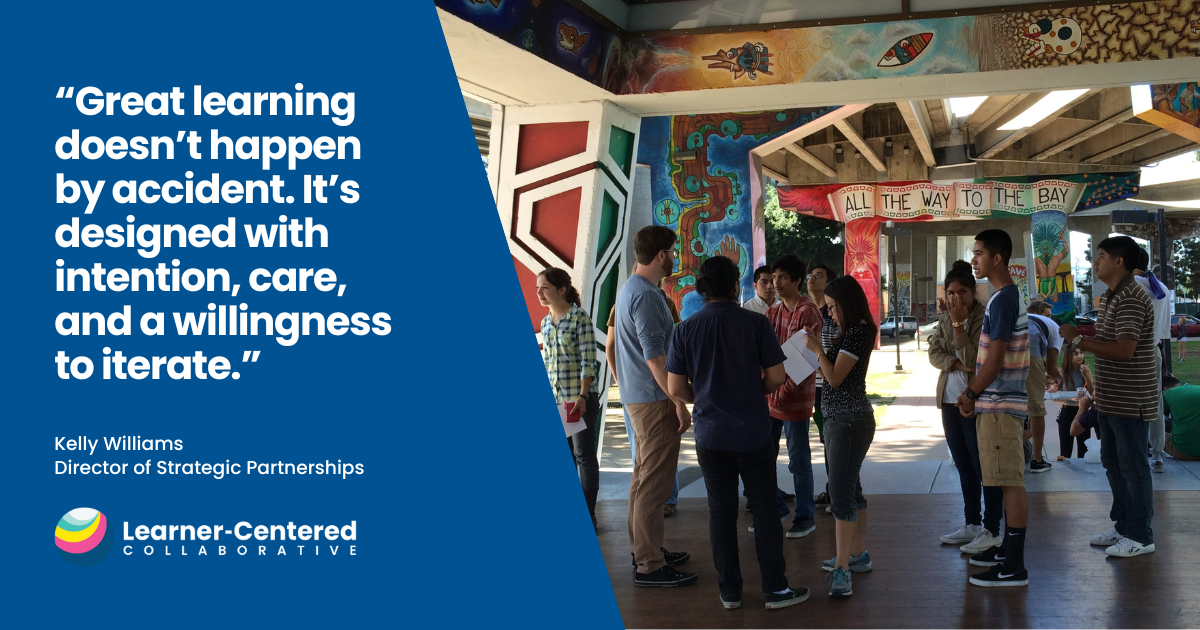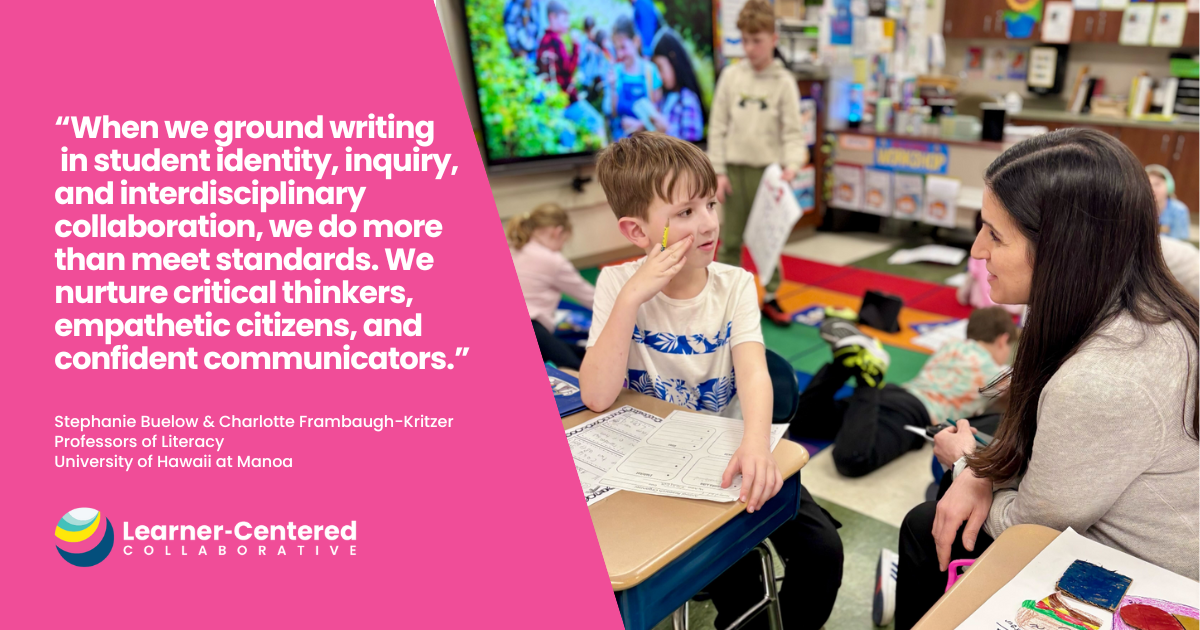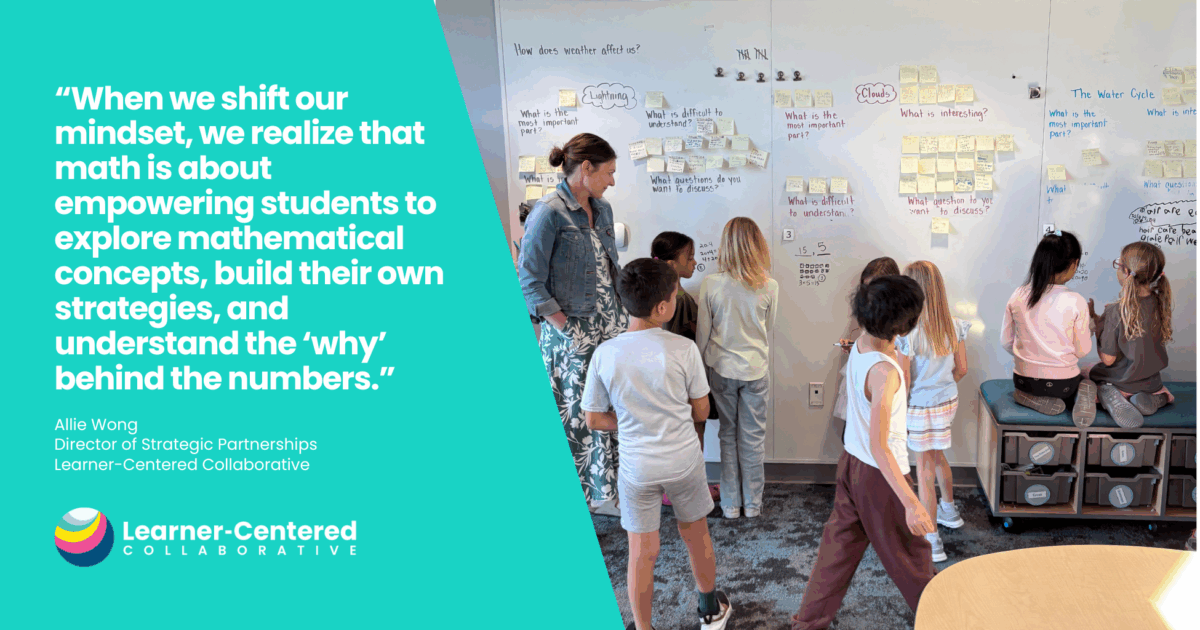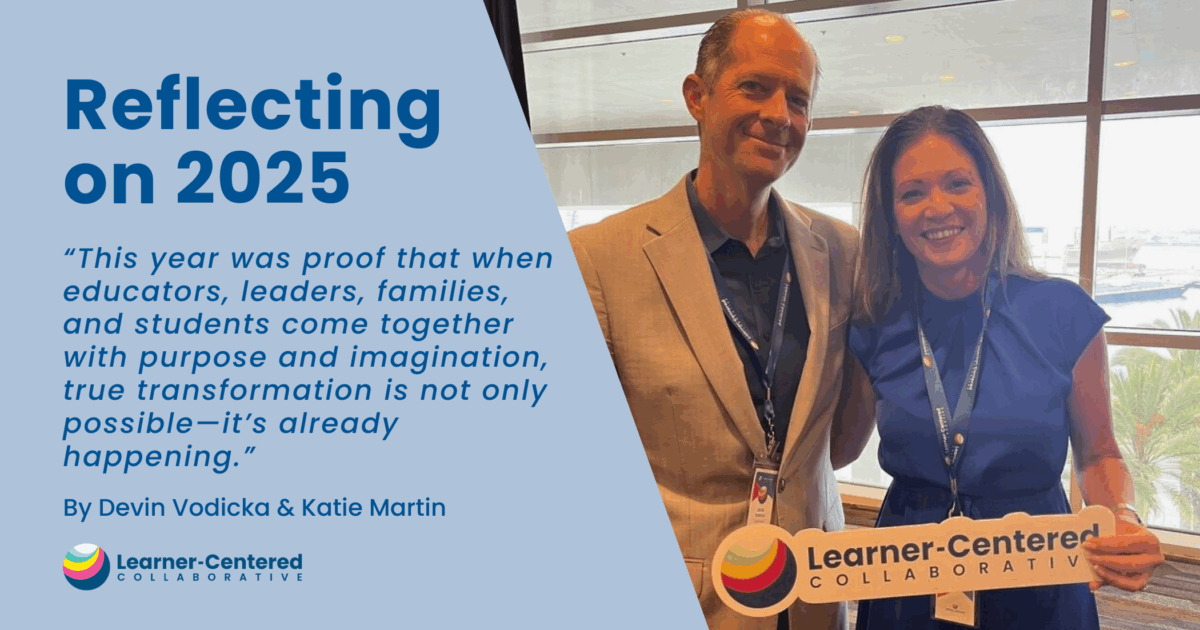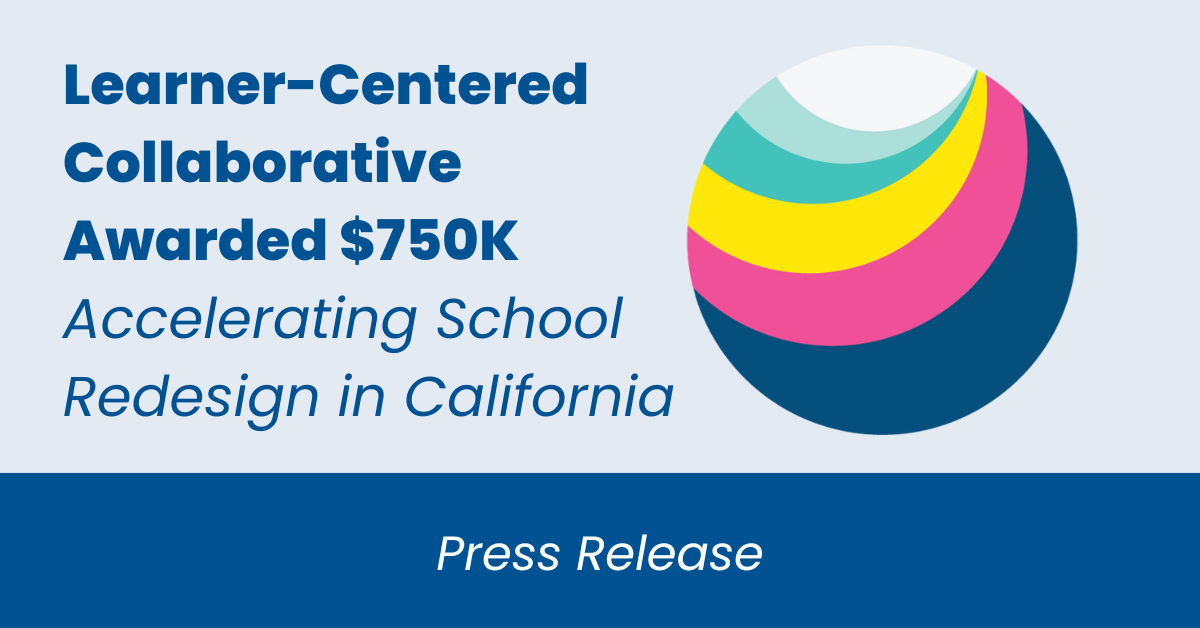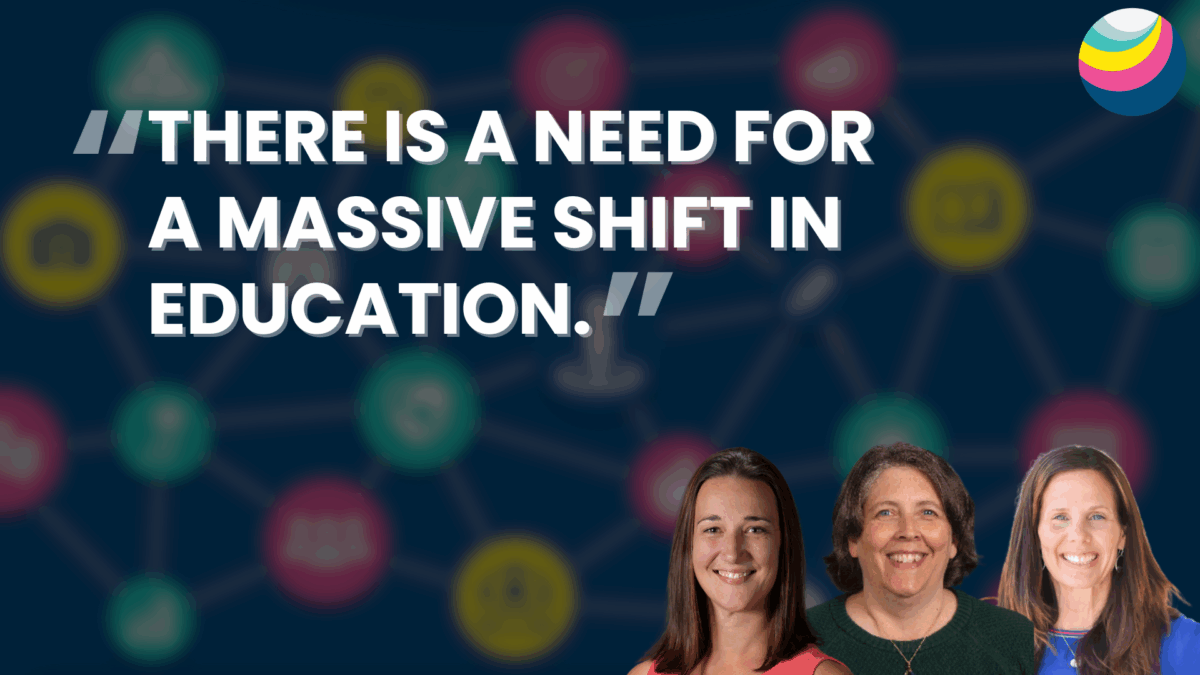What Happens When You Let Learners Lead? Embark Learners Share Their Insights
This work is a collaborative effort by Learner-Centered Collaborative in partnership with Eli Yoon, 6th grade learner; Tahliiya Harris, 6th grade learner; Vida Mennell, 7th grade learner; and Carissa Solomon, Senior Lead Educator at Embark Education in Denver, CO.
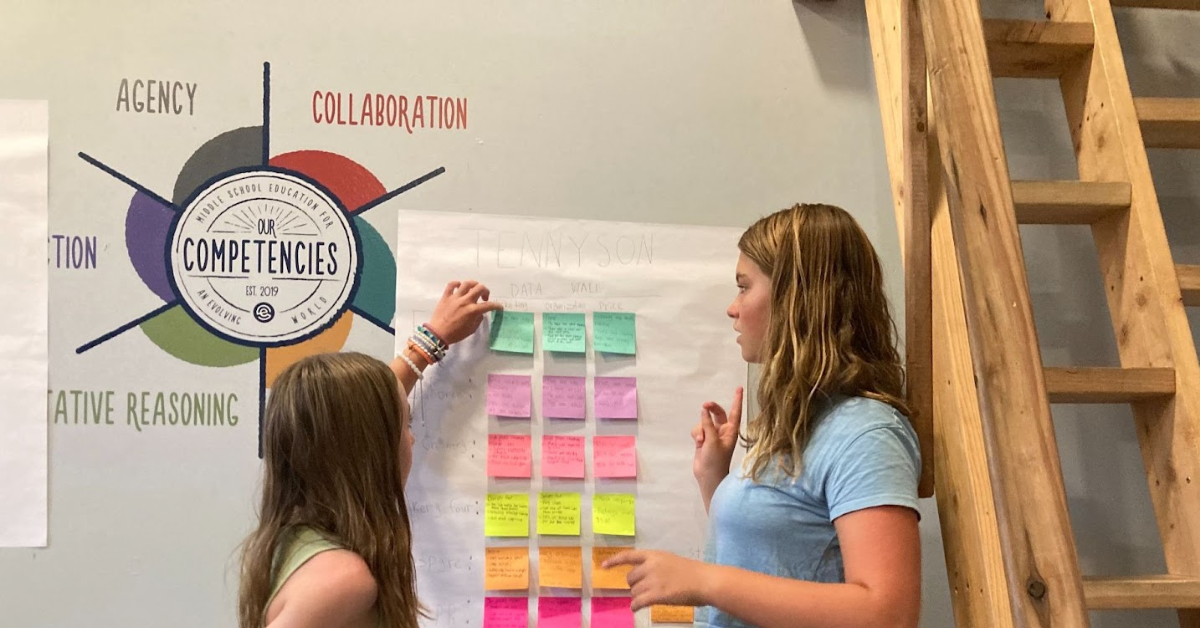
In Spring 2024, Embark Education, a micro-school in Denver, Colorado, was preparing to welcome a new educator for the upcoming fall semester. Embark serves 6th-8th grade students with a mission to support courageous inquiry, engagement, and self-discovery. Their unique approach includes a flexible schedule, competency-based assessment without grades, and diverse, long-term projects, called Learning Experiences (LEs), that connect with the broader Denver community. The school itself is housed and operates within Pinwheel Coffee, a local business in North Denver.
As the Embark team considered how to best prepare new educators for success in their unconventional teaching environment, they recognized an opportunity to embody their core belief in empowering learners to shape their educational experience. The team realized that current learners would be the ideal guides for incoming educators. In line with Embark’s commitment to involving learners in decision-making, Carissa Solomon, a founding educator, offered a Learning Experience (LE) in the third trimester. This LE tasked learners with creating an “Essential Manual” – a handbook written by learners to guide new educators on Embark’s unique teaching and learning approach. The project not only prepared incoming educators but also gave learners a platform to reflect on and influence their learning environment, fully aligning with Embark’s principle of learner-centered education.
The Manual
The learners thoughtfully reflected on essential practices, some unique to Embark and some that apply to lots of learning environments. They explained each one’s importance to the community, and enriched their work with examples, quotes, and visuals.
Highlights from the Manual:
From ‘How to Talk to Learners’
“Educators talk to us and think about us in a very intentional way designed for us to feel like people with voices and choices…[They] don’t act like they know more than us. They have lots to teach us, and we have lots to learn, but they don’t act like they are above us. They make us feel like we are their equals.” Maura, 8th-grade
From ‘AM/PM Check-Ins’
“We do check-ins because it is important to be aware of how others are feeling around you so you can be empathetic and thoughtful. We also do it so the educators can be supportive.” Tahliiya, 6th-grade and Cruzer, 7th-grade
From ‘Trust at Embark’
“We trust our educators, and the educators trust us. We trust the educators because we can talk to them about whatever we want, and they don’t share. We all can say our opinions and thoughts, and no one will judge us.” Macie & Natalia, 7th-grade
And, of course, from ‘Lunch Time’
“Lunch at the park is important because we all need to eat food and get natural sunlight.” Ernesto, 6th-grade and Natty, 7th-grade
The Process
To create the Essential Manual, students:
- Interviewed current educators and fellow learners
- Reflected on current practices using:
- Co-created an outline with educators, determining:
- Essential practices to include
- How to organize the information
- Divided the work, with students taking on different sections
- Drafted their sections
- Went through revision cycles with peer review and feedback from non-educator Embark staff, including the facilities manager, financial officer, human resources and administrative staff
- Refined their writing and created a cohesive final manual
Peer collaboration was crucial to the process. One learner, Vida, who joined the Embark community as a 7th grader was finding it challenging to describe practices unique to Embark. She reflected that “having peers to work with and gather information from the past year made this learning experience a very memorable experience.”’
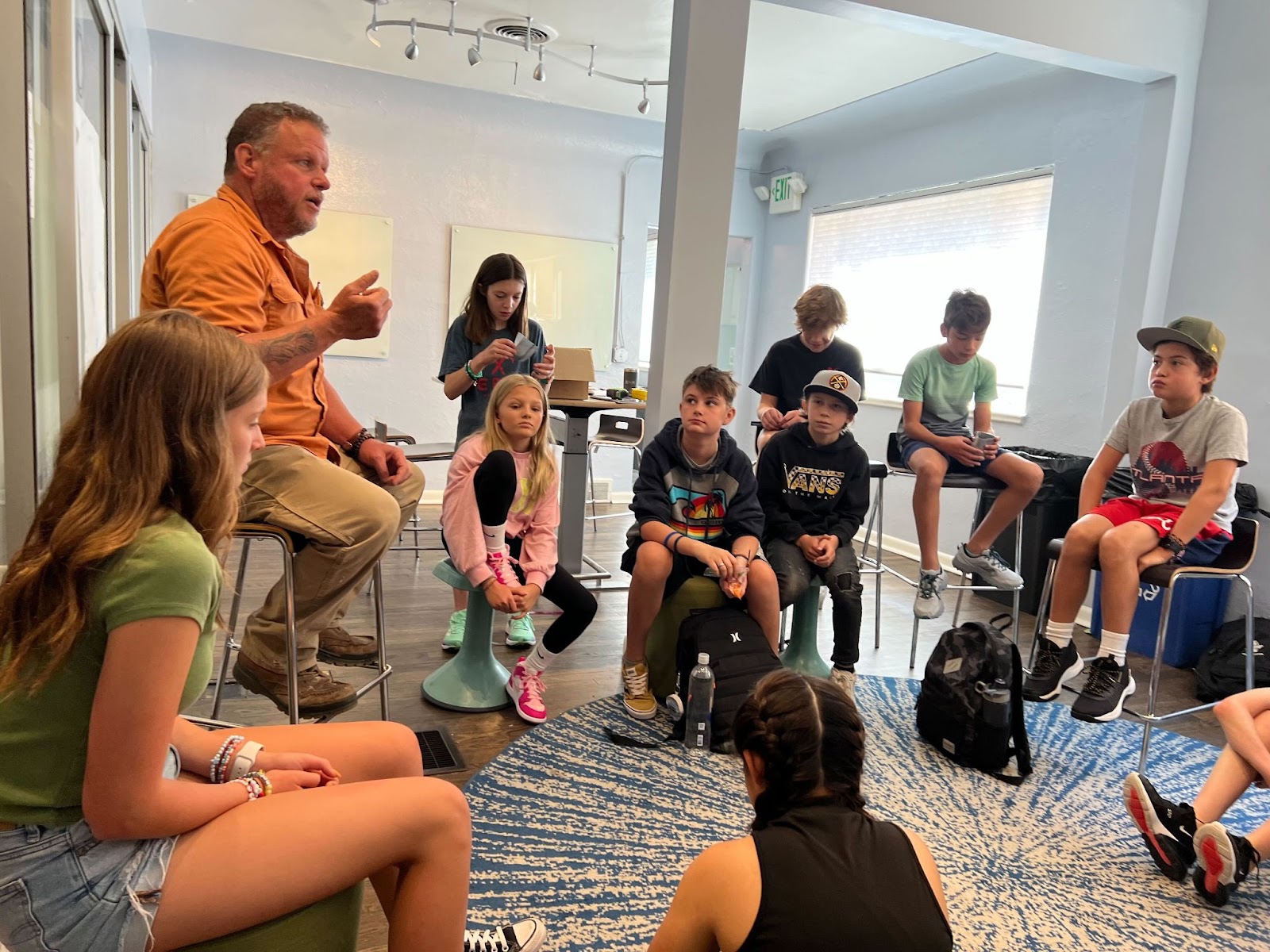
Reflections from Learners
This learning experience centered on reflection, a core competency at Embark. Learners reflected on Embark educators’ essential practices, discovering that what they once perceived as routine occurrences were actually intentional design elements crafted by their educators.
One learner, Maura, realized through this learning experience (LE) that “everything that Embark is based on is just a bunch of ideas coming together to form some type of everyday function. Deep diving into the why of everything during this LE really helped me see Embark as a place of people and ideas. When I remember to do so, I can use some of the same reflection strategies to help me learn about the people, places, and systems I get so used to seeing every day.”
They also reflected on their power as learners in the space to influence those essential practices to ensure that they best support all learners at Embark.
In addition to creating the manual for educators, learners were able to make real suggestions about what learning looks like at Embark using the continue, stop, start protocol. For example, in working through this protocol learners expressed a desire to continue Embark’s choice reading program and stop eating lunch outside when it was less than 40 degrees. Educator Carissa Solomon reflected that “these were valuable insights that learners felt comfortable sharing because of the structured reflection process. They were even able to provide clear evidence from their lived experiences to support their statements. So great!”
Eli, a 6th grader, reflected on what it was like as a learner to get to write a guide for adult educators:
This experience was fun for lots of reasons. First, I like typing, so it was fun to write the manual entry and this blog post! Aside from that, I liked that I could decide what to write about. I chose an Embark practice that I care about and could do really well writing about. For example, when Carissa said scheduling was going to be one of the harder ones, I began thinking about how I could write it all out, and if you ask me, I did a pretty good job. It made me feel pretty good because I knew I could do a good job on something my educator thought would be hard. It made me feel really proud of myself. Like I know Embark well enough to teach adults about what we do.
Engage Learners as Decision Makers & Influencers
Unlike traditional schools where student input is often limited to surveys, at Embark, we believe it’s crucial to involve learners in designing their learning experiences and environments. We often ask ourselves:
- What are we doing that learners could be or should be doing?
- How can we support them in doing that?
For example, learners are involved in the process of designing their daily schedule and they impact decisions made in the coffee shop where our school is embedded, like when they selected a new coffee roaster. This approach stems from our belief that those who spend the most time in a space should have a say in how it operates.
Want to create more personalized, authentic, and equitable learning environments? Try these Learner-Centered strategies: “Let Students Make Decisions” and “Bring Students to the Table”!
When asked to reflect on why it is important for learners to have a say in decisions on how school is operated, Tahliiya, a 6th grader shared:
I think it is important for learners to have a say in how school is operated because we are the ones who work and learn at school every day. So, we should get a say in our schools and how they run! Most adults don’t understand how much learners want to help design their schools. Educators think it’s easier to just do things the traditional way – the way things have always been done. For example, most schools have desks in classrooms, but that doesn’t work the best for us. I am more comfortable with standing whiteboard tables and couches. We are in these spaces for eight hours every day. We need to feel comfortable so we can learn!
As educators and school leaders, we must challenge ourselves to find meaningful ways to empower learners to shape their educational experience. By giving learners a voice in learning experience design, school policies, and more broadly the learning environments, we not only enhance their engagement but also prepare them for active engagement in the world. Let’s rethink traditional power structures in education and ask ourselves: What opportunities can we create for learners to influence and improve their schools? The insights we gain from this collaborative approach may revolutionize the way we think about education.
